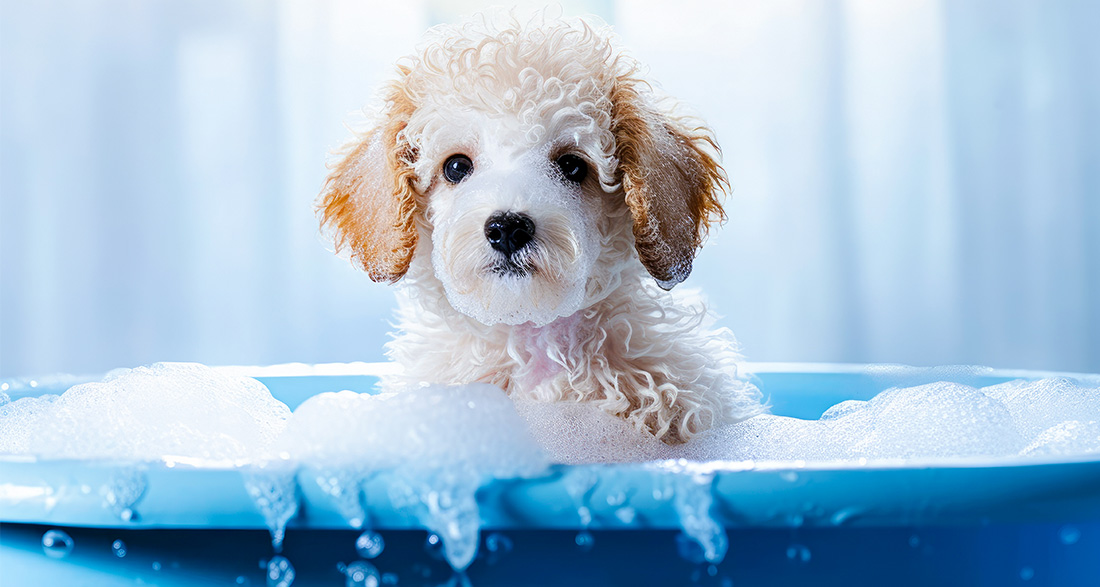The joy of having a new puppy is immense, and as pet owners, we often focus on topics like nutrition, exciting toys, or proper training at the beginning of this new friendship. It’s only when our furry friend takes a leap into a muddy puddle that we start wondering if and how puppies can be bathed. To answer this question, this article compiles all the essential information.
Can I bathe my puppy?
Unlike humans, puppies don’t need regular baths with soap or shampoo for personal hygiene. The outermost layer of their skin, the lipid layer, and their fur provide a natural cleansing mechanism, where small dirt particles move from the skin to the surface of the fur.
However, if our puppy has played in the mud or disrupted the garden bed, a bath may be unavoidable in some cases. Nevertheless, to protect the skin, you should aim to bathe your puppy as infrequently as possible.
The more frequently a dog’s lipid layer is attacked by grooming products, the faster skin irritations can occur. These irritations are characterized by redness and increased itching.
How do I bathe my puppy correctly?
It’s essential that your puppy associates bathing with a positive experience and doesn’t develop fear of the bathroom. To achieve this, we have compiled the following tips and guidelines for you:
- Many bathtubs and showers have a slippery floor, making it easy for your puppy to slip. To prevent this, you can place a non-slip mat before bathing.
- Creating a pleasant atmosphere for the puppy is crucial as soon as you enter the bathroom. Bathing should become a routine for the dog, so ensure a calm and relaxed atmosphere even before starting the bath.
- Reward your little one with treats when entering the bathroom and placing them in the bathtub. This way, they will associate the bathroom with something enjoyable.
- To prevent your puppy from being scalded or startled by too hot or cold water, be sure to estimate the water temperature beforehand – for example, by using the back of your hand.
- Ensure the water stream is gentle and keep it away from the puppy’s eyes. This applies to grooming products as well, which can strongly irritate the eyes.
- Start with your dog’s legs. Gradually work your way towards the chest and abdomen. From there, gently remove dirt from the back and, finally, the neck and head region through gentle massaging.
What grooming products do I need
It’s not always necessary to wash the puppy with grooming products. Often, massaging the dirt out of the fur with plain water is sufficient.
However, sometimes a bath without grooming products is not enough. In such cases, you should use a special puppy shampoo. These shampoos are more suitable for the sensitive skin of young dogs than conventional grooming products, as they maintain a skin-friendly pH level and avoid irritating ingredients.
The Skin of Puppies
The skin, as the largest organ, regulates the warmth balance for our puppies. It also acts as a protective barrier against mechanical and physical stimuli and plays a crucial role as a sensory organ, sensing pressure, pain, and warmth.
Therefore, the skin is vital for our puppies and must be protected from harmful influences. The skin is surrounded by a lipid layer, which consists of lipids (e.g., fats). These lipids have a water-loving (hydrophilic) head on one side and a non-water-loving (hydrophobic) tail on the other side, protecting the skin from drying out and environmental influences.


